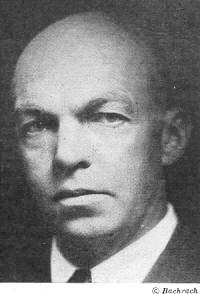Major Edwin Armstrong Receives Award from Army Signal Corps
|
|
Major Edwin Armstrong, whose first name is Edwin but is often assumed to be Major (which used to be a not-so-rare man's first name), was endowed with many awards, patents, titles, and honorary distinctions during his amazing career. He served in the Signal Corps during World War I, where he attained the rank of Major. Having already achieved notoriety for his work prior to being commissioned, he entered as military service as a Captain (RCA's David Sarnoff was initially commissioned as a General during World War II). Being highly patriotic, Armstrong granted the U.S. government free use of his patented material during both wars. As with many other renowned inventors, scientists and engineers of the era (and no doubt today as well), he suffered from personal issues that haunted him constantly, as written about in my Kirt's Cogitations article entitled, "Edwin H. Armstrong: The Rest of the Story." Major Armstrong Receives Award from Army Signal Corps Major Armstrong, outstanding pioneer, was last month awarded a Certificate of Appreciation by the Signal Corps in recognition of the valuable work he is now doing for the United States. Definitely, the citation was for "outstanding contributions to the Signal Corps, Army Service Forces." Armstrong was further honored in that the certificate to him was the first one of its kind to be issued. It is the intention of the Signal Corps to present such certificates to individuals and companies who have performed notable services beyond the normal requirements of duty but who are not under the direct control of the War Department and are therefore, not eligible for the Army-Navy "E." Dr. Armstrong's contributions to this war began in 1941, when he waived all his royalties on the use of 17 patents covering FM apparatus used by the War Department. At the same time he offered to license any manufacturers designated by the War Department to produce apparatus under his patents for use during the present emergency, at the rate of one dollar a year per patent. This is not the first time Dr. Armstrong's efforts have been of value to the War Department and the radio public. It was as a Signal Corps officer in France during the last war that he developed the super-heterodyne circuit, now used in practically all broadcast receivers. Later he originated the super-regenerator, commonly used in ultra-short-wave reception, and as a crowning triumph, brought out (in 1934) his latest invention, FM, which has already revolutionized standards of broadcast reception.
Posted January 5, 2022 |
|

